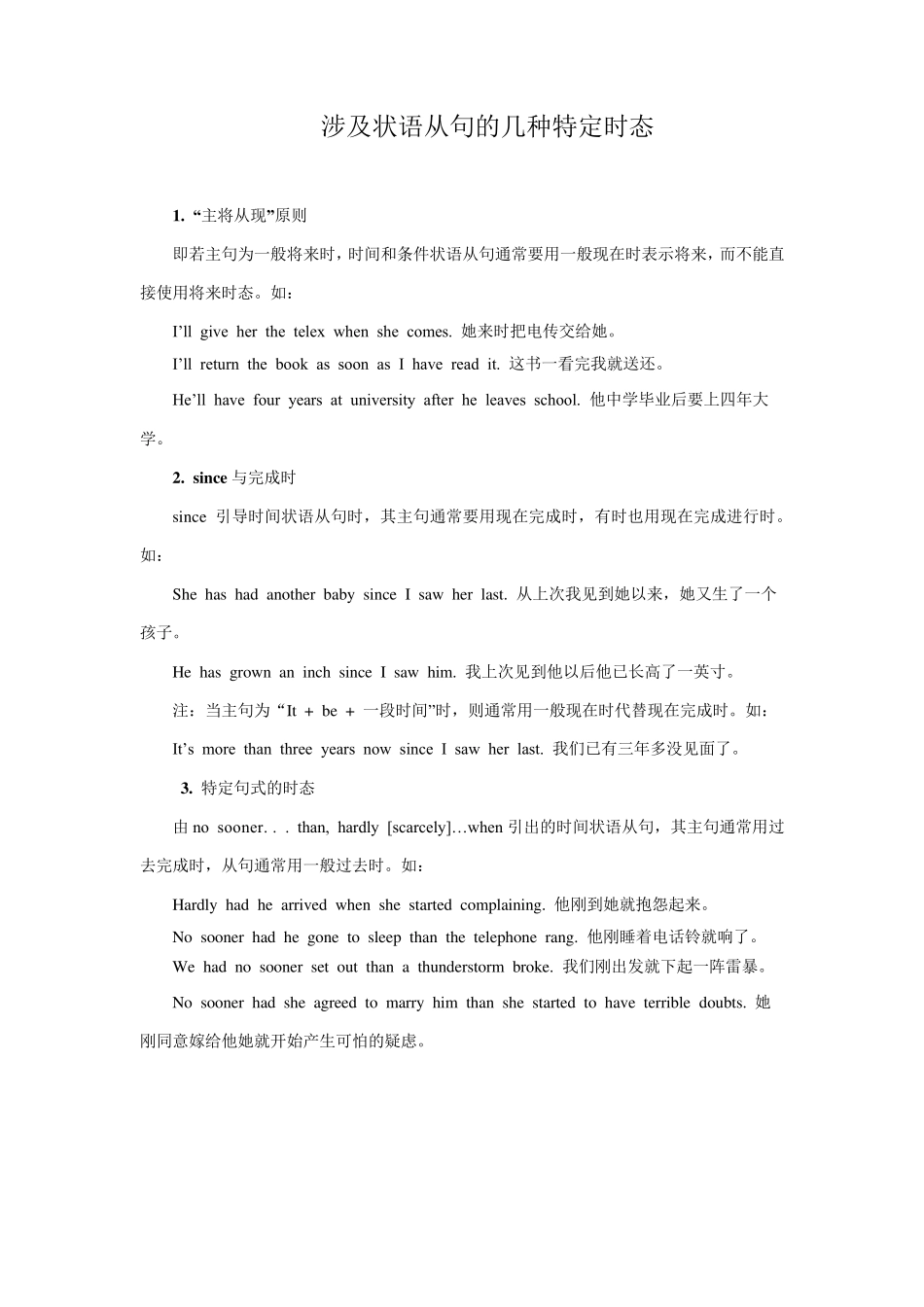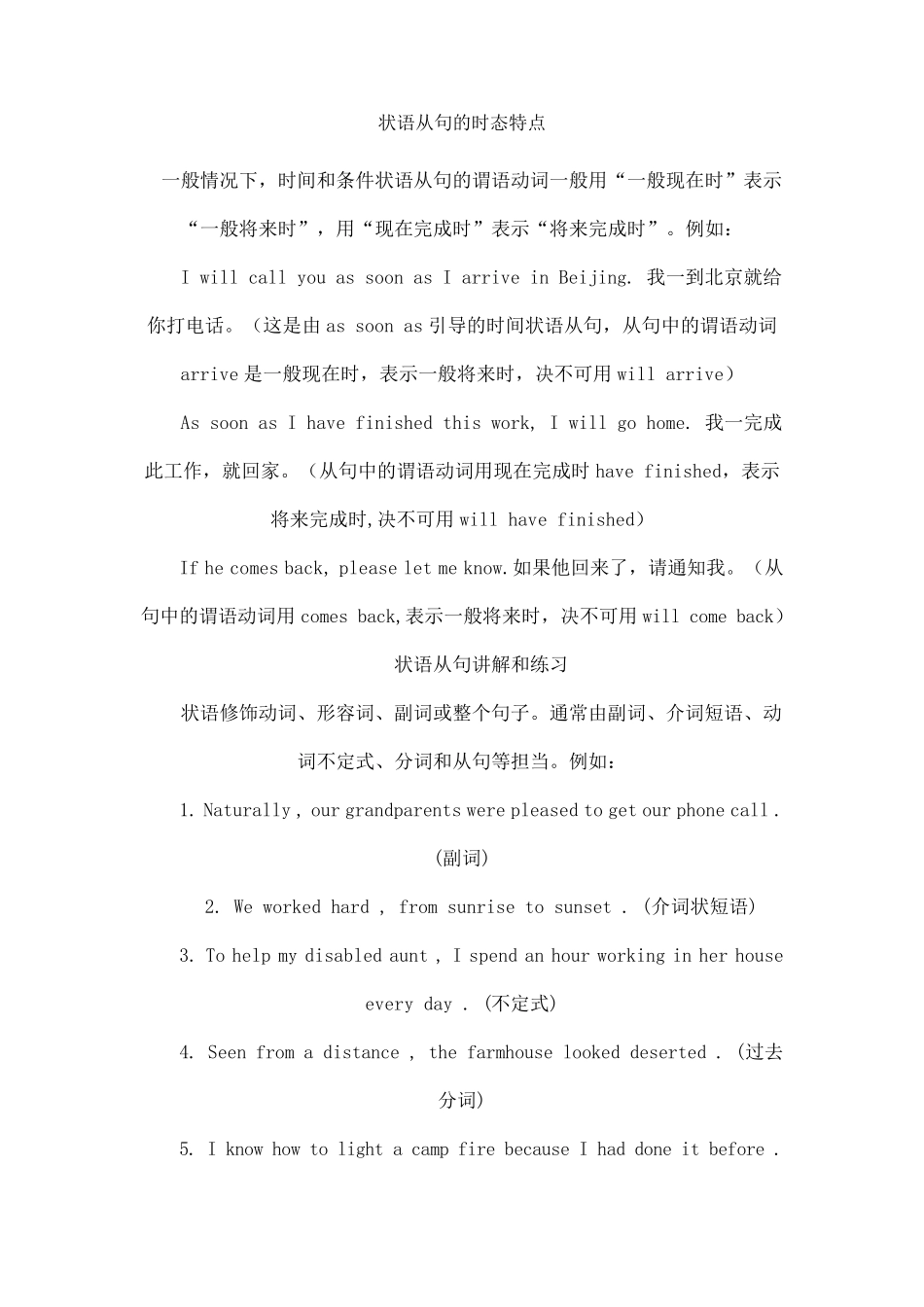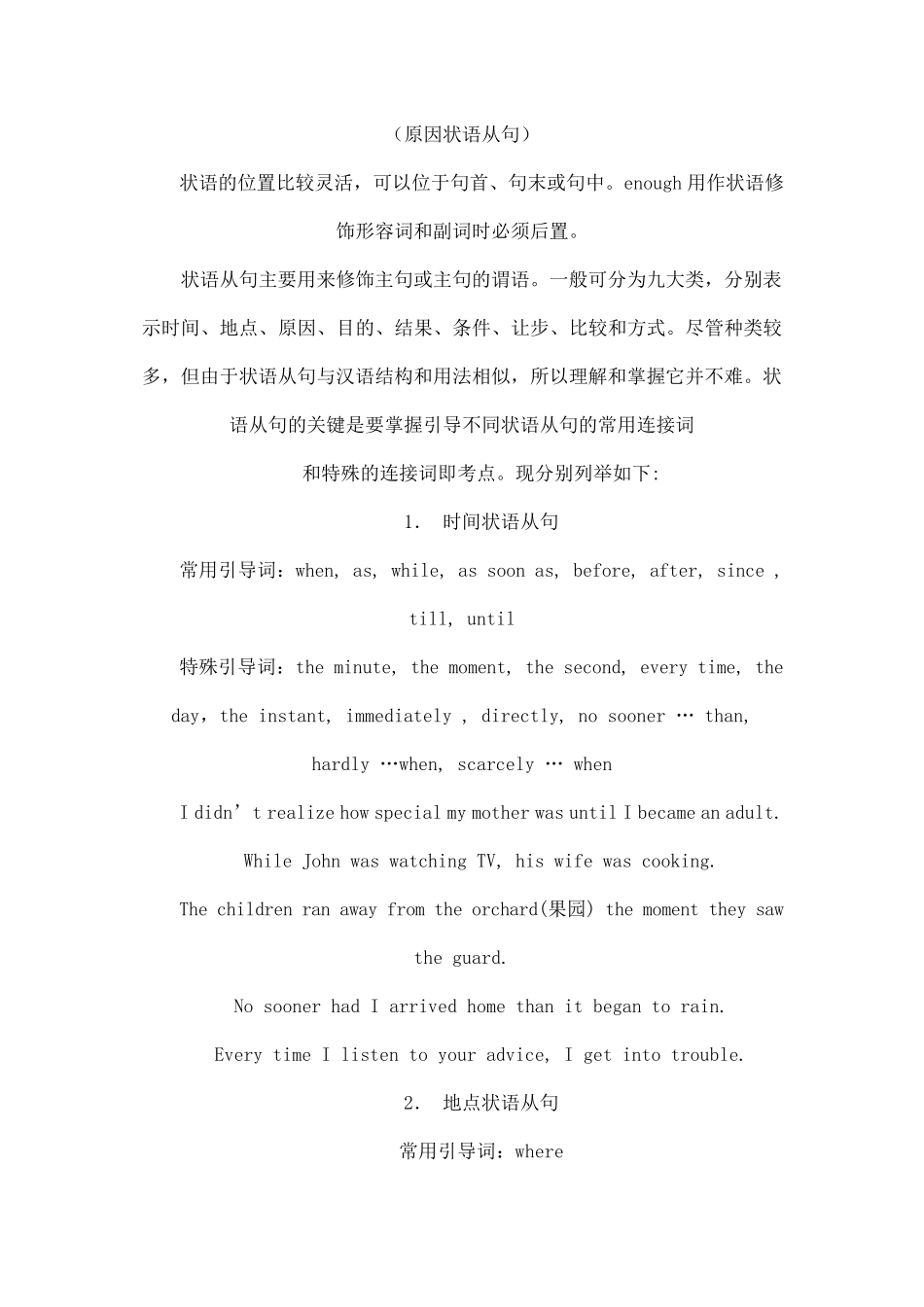涉及状语从句的几种特定时态 1. “主将从现”原则 即若主句为一般将来时,时间和条件状语从句通常要用一般现在时表示将来,而不能直接使用将来时态。如: I’ll give her the telex when she comes. 她来时把电传交给她。 I’ll return the book as soon as I have read it. 这书一看完我就送还。 He’ll have four years at university after he leaves school. 他中学毕业后要上四年大学。 2. since 与完成时 since 引导时间状语从句时,其主句通常要用现在完成时,有时也用现在完成进行时。如: She has had another baby since I saw her last. 从上次我见到她以来,她又生了一个孩子。 He has grown an inch since I saw him. 我上次见到他以后他已长高了一英寸。 注:当主句为“It + be + 一段时间”时,则通常用一般现在时代替现在完成时。如: It’s more than three years now since I saw her last. 我们已有三年多没见面了。 3. 特定句式的时态 由 no sooner. . . than, hardly [scarcely]… when 引出的时间状语从句,其主句通常用过去完成时,从句通常用一般过去时。如: Hardly had he arrived when she started complaining. 他刚到她就抱怨起来。 No sooner had he gone to sleep than the telephone rang. 他刚睡着电话铃就响了。 We had no sooner set out than a thunderstorm broke. 我们刚出发就下起一阵雷暴。 No sooner had she agreed to marry him than she started to have terrible doubts. 她刚同意嫁给他她就开始产生可怕的疑虑。 状语从句的时态特点 一般情况下,时间和条件状语从句的谓语动词一般用“一般现在时”表示“一般将来时”,用“现在完成时”表示“将来完成时”。例如: I will call you as soon as I arrive in Beijing. 我一到北京就给你打电话。(这是由 as soon as 引导的时间状语从句,从句中的谓语动词arrive 是一般现在时,表示一般将来时,决不可用will arrive) As soon as I have finished this work, I will go home. 我一完成此工作,就回家。(从句中的谓语动词用现在完成时have finished,表示将来完成时,决不可用will have finished) If he comes back, please let me know.如果他回来了,请...


